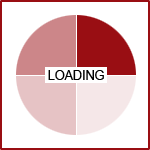Understanding the costs associated with asbestos testing is crucial for homeowners, especially those residing in older properties where asbestos-containing materials (ACMs) may be present. Asbestos, once widely used for its insulating properties, poses significant health risks when disturbed. This guide outlines the factors influencing asbestos testing costs, providing homeowners with the information needed to make informed decisions.
At UNYSE, we are committed to providing thorough and reliable asbestos analysis and abatement services. Our team of certified professionals is equipped to handle all aspects of asbestos testing and remediation, ensuring your home remains a safe environment for you and your family.
Average Asbestos Testing Costs
The cost of asbestos testing varies based on several factors, including the type of inspection, property size, and specific testing methods employed. Below is a breakdown of typical costs:
-
Standard Inspection: A visual assessment combined with sample collection and laboratory analysis typically ranges from $250 to $850.
-
Air Quality Testing: Assessing airborne asbestos fibers can cost between $300 and $1,000, depending on the size of the area and the complexity of the testing required.
-
Laboratory Analysis:
-
Per Sample: Laboratory fees for analyzing each sample range from $20 to $80, influenced by the type of analysis and turnaround time.
-
It's important to note that larger homes or properties with complex structures may incur higher costs due to the increased number of samples and labor required.
Factors Influencing Asbestos Testing Costs
Several key factors affect the overall cost of asbestos testing:
1. Property Size and Accessibility
-
Size: Larger properties require more extensive inspections and a greater number of samples, leading to higher costs.
-
Accessibility: Areas that are difficult to access, such as attics or crawl spaces, may increase labor time and, consequently, the overall cost.
2. Type of Testing
Different testing methods come with varying costs:
-
Visual Inspection: An initial assessment to identify potential ACMs, typically costing between $225 and $600.
-
Air Sampling: Used to detect airborne asbestos fibers, with costs ranging from $500 to $1,000.
-
Bulk Sample Analysis: Involves collecting physical samples from materials like insulation or flooring, costing approximately $50 to $150 per sample.
3. Laboratory Fees
Laboratory analysis is a critical component of asbestos testing:
-
Basic Analysis: Standard testing per sample ranges from $20 to $80, depending on the complexity and turnaround time.
-
Expedited Results: Rush processing may incur additional fees, typically increasing the cost by 20% to 50%.
-
Advanced Testing: Techniques like Transmission Electron Microscopy (TEM) for detailed fiber analysis can cost between $200 and $500 per sample.
Regulatory and Safety Considerations
Ensuring compliance with regulations and prioritizing safety are essential when dealing with asbestos in your home. Proper handling and abatement of asbestos-containing materials (ACMs) are critical to protect the health of occupants and workers. Below are key considerations:
Certified Inspectors
Hiring certified professionals is crucial for accurate assessments and legal compliance. In New York State, individuals involved in asbestos-related activities must undergo specific training and obtain certification. The New York State Department of Health oversees the accreditation of asbestos safety training providers, ensuring that workers are properly trained in handling, evaluation, sampling, and removal of ACMs. After completing the required training, individuals must apply for certification through the New York State Department of Labor's Asbestos Licensing and Certification Unit. This two-step process ensures that only qualified professionals conduct asbestos inspections and abatement.
Post-Abatement Testing
After asbestos removal, air quality testing is often required to confirm the area is safe for re-occupancy. In New York State, regulations mandate specific procedures for air sampling following asbestos abatement projects. For instance, a minimum number of air samples must be collected both inside and outside the regulated abatement work area to ensure that asbestos fiber concentrations are within acceptable limits. If initial air sampling results are unsatisfactory, recleaning and additional sampling are required until satisfactory results are achieved.
It's important to note that the cost of post-abatement air quality testing can vary based on factors such as the size of the area and the complexity of the project. Homeowners should consult with certified professionals to obtain accurate estimates and ensure that all regulatory requirements are met.
By engaging certified inspectors and adhering to mandated post-abatement testing protocols, homeowners can ensure that asbestos-related work is conducted safely and in compliance with New York State regulations.
Key Takeaways for Homeowners
Ensuring the safety of your home and family from asbestos exposure involves several proactive steps. Here's an expanded guide to help you navigate the process:
1. Obtain Multiple Quotes
When considering asbestos testing, it's essential to gather itemized estimates from several certified professionals. This approach allows you to:
-
Compare Services and Costs: Different companies may offer varying levels of service, testing methods, and pricing structures. By obtaining multiple quotes, you can assess which provider offers the best value for your specific needs.
-
Verify Credentials: Ensure that each professional holds the necessary certifications and licenses required in your state. In New York, for instance, asbestos inspectors must be certified by the New York State Department of Labor.
-
Understand the Scope of Work: Itemized quotes should detail the services provided, including the number of samples to be taken, areas to be tested, and the type of analysis to be performed. This transparency helps prevent unexpected costs and ensures comprehensive testing.
2. Prioritize High-Risk Areas
Focusing on materials and areas most likely to contain asbestos can make testing more efficient and cost-effective:
-
Common Asbestos-Containing Materials: Asbestos was widely used in various building materials

